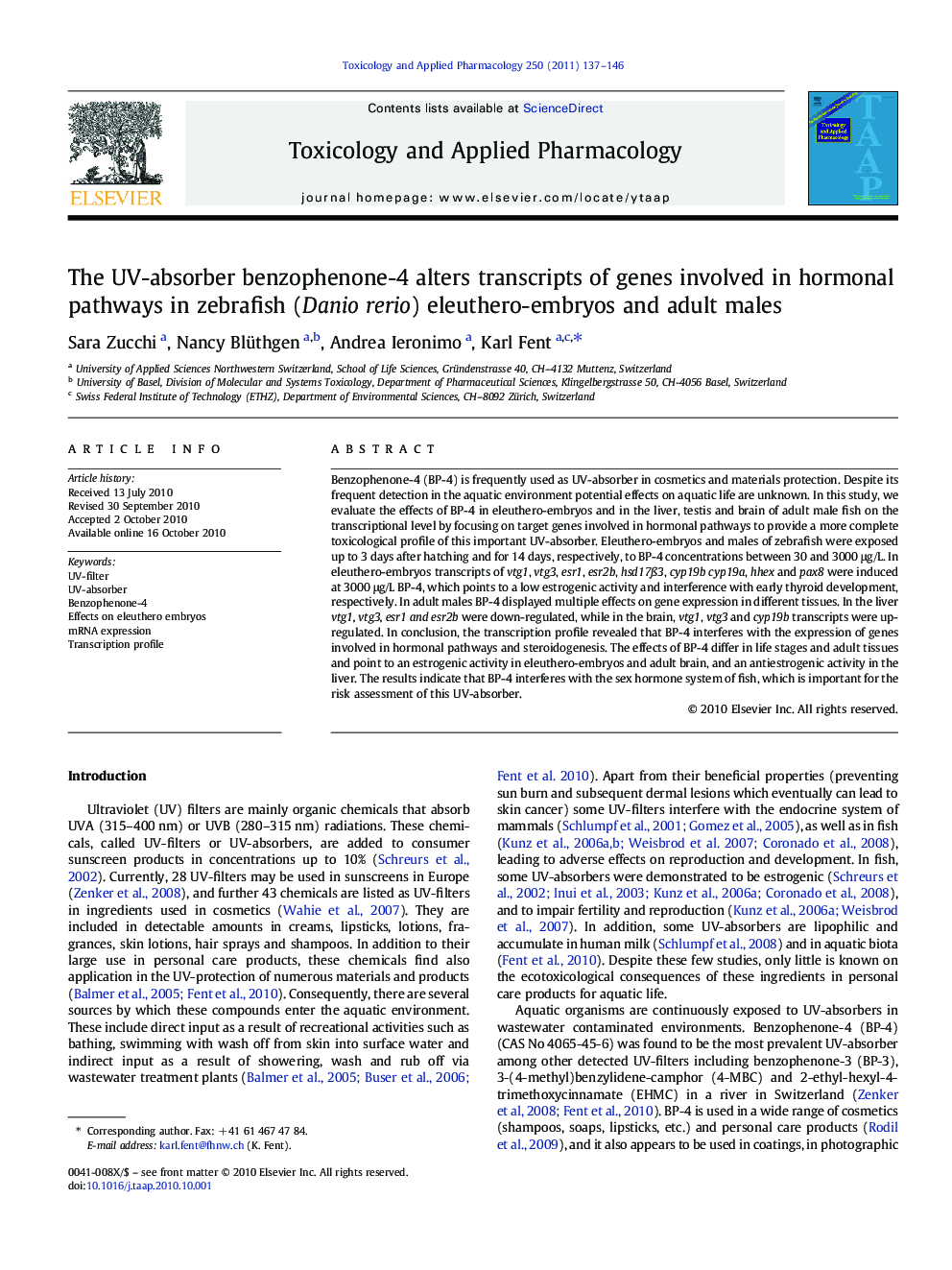| Article ID | Journal | Published Year | Pages | File Type |
|---|---|---|---|---|
| 2569898 | Toxicology and Applied Pharmacology | 2011 | 10 Pages |
Benzophenone-4 (BP-4) is frequently used as UV-absorber in cosmetics and materials protection. Despite its frequent detection in the aquatic environment potential effects on aquatic life are unknown. In this study, we evaluate the effects of BP-4 in eleuthero-embryos and in the liver, testis and brain of adult male fish on the transcriptional level by focusing on target genes involved in hormonal pathways to provide a more complete toxicological profile of this important UV-absorber. Eleuthero-embryos and males of zebrafish were exposed up to 3 days after hatching and for 14 days, respectively, to BP-4 concentrations between 30 and 3000 μg/L. In eleuthero-embryos transcripts of vtg1, vtg3, esr1, esr2b, hsd17ß3, cyp19b cyp19a, hhex and pax8 were induced at 3000 μg/L BP-4, which points to a low estrogenic activity and interference with early thyroid development, respectively. In adult males BP-4 displayed multiple effects on gene expression in different tissues. In the liver vtg1, vtg3, esr1 and esr2b were down-regulated, while in the brain, vtg1, vtg3 and cyp19b transcripts were up-regulated. In conclusion, the transcription profile revealed that BP-4 interferes with the expression of genes involved in hormonal pathways and steroidogenesis. The effects of BP-4 differ in life stages and adult tissues and point to an estrogenic activity in eleuthero-embryos and adult brain, and an antiestrogenic activity in the liver. The results indicate that BP-4 interferes with the sex hormone system of fish, which is important for the risk assessment of this UV-absorber.
